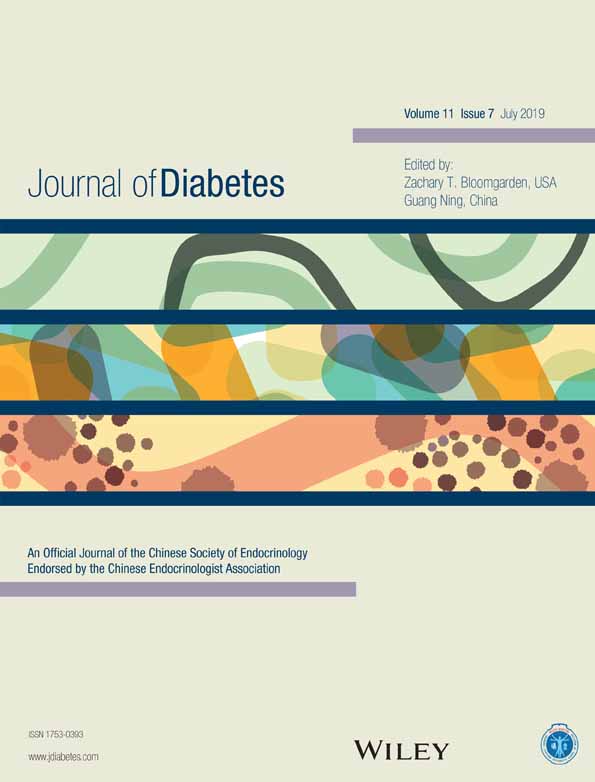Diabetic outcomes: Cardiovascular outcomes with lipid modification H2D
糖尿病结局:H2D调脂治疗后的心血管结局
Diabetes is considered by many to be a coronary artery disease (CAD) equivalent. There are many factors responsible for the diabetic risk, including associated lipid abnormalities, predisposition to thrombosis due to platelet activation, and endothelial dysfunction, among others. With this heightened risk for cardiovascular disease (CVD), it would not be surprising that diabetics would benefit from treatments to lower low-density lipoprotein cholesterol (LDL-C).
The Collaborative Atorvastatin Diabetes Study (CARDS) was one of the first studies to evaluate the effectiveness of statins for the primary prevention of CVD.1 In that study, 2838 subjects with baseline LDL-C of 117 mg/dL were randomized to atorvastatin 10 mg versus placebo. There was a 37% reduction in the composite endpoint of myocardial infarction (MI), unstable angina, acute coronary heart disease events, coronary revascularisation, or stroke.1 The Cholesterol Treatment Trialist Collaborators (CTTC) confirmed the benefit of statins in diabetics, reporting a 20% reduction in vascular events for every 1-mmol/L reduction in LDL-C.2
The benefit of fenofibrates in diabetics was assessed in the Fenofibrate Intervention in Event Lowering in Diabetes (FIELD) study and the Action to Control Cardiovascular Risk in Diabetes (ACCORD) Lipid study.3, 4 In the FIELD study, a randomized controlled study of 9795 subjects with type 2 diabetes (T2D) on statin therapy with add-on treatment with fenofibrate or placebo, there was a non-significant 11% reduction in the primary endpoint of coronary events, with a 24% reduction of non-fatal MI.3 The greatest benefit occurred in a subset of patients with low high-density lipoprotein cholesterol (HDL-C) and elevated triglycerides.5 The ACCORD-LIPID trial confirmed the findings of the FIELD study, showing a benefit of adding fenofibrate only in the case of diabetics with low HDL-C and elevated triglycerides, and no benefit in the other 82% of subjects.3-5
The utility of ezetimibe in diabetic patients as an addition to statin treatment in those patients presenting with acute coronary syndromes was assessed in the Improved Reduction of Outcomes: Vytorin Efficacy International Trial (IMPROVE-IT).6 A substudy of 27% of subjects who were diabetic (ACCORD-LIPID) showed a 14% reduction in cardiovascular (CV) events over a mean follow-up period of 7 years.6
The effect of niacin as an addition to statin treatment was assessed in the Atherothrombosis Intervention in Metabolic Syndrome with Low HDL/High Triglycerides: Impact on Global Health Outcomes (AIM-HIGH) study, which included patients with CHD and residual dyslipidemia on statin therapy (low HDL-C) but who met LDL-C treatment goals treated with niacin versus placebo.7 In that study, 34% of the population had diabetes with no incremental benefit of niacin with statin therapy on CV events.
The cardiovascular risk reduction with icosapent ethyl for hypertrigly ceridemia (REDUCE-IT) trial, which was ongoing at the time of this meeting, (H2D) assessed the utility of icosapent ethyl, a highly purified eicosapentaenoic acid ethyl ester, in patients with either established CVD or primary prevention diabetics with one or more CV risk factors on statin therapy with an LDL-C of 40-100 mg/dL.8 There was a significant reduction in the primary endpoint in diabetics overall by 23%, with a 12% trend for a reduction in CV events in the primary prevention diabetic group.
Trials of the two proprotein convertase subtilsin-kexin type 9 (PCSK9) inhibitors, namely Odyssey Outcomes evaluating alirocumab and FOURIER evaluating evolocumab, confirmed benefit in diabetic patients.9, 10 With evolocumab there was a significant 17% reduction in the primary composite endpoint of CV death, MI, stroke, unstable angina or revascularization.10 In Odyssey Outcomes, there was an absolute risk reduction of 2.3% in diabetics versus a 1.2% reduction in non-diabetics.9
In summary, large cardiovascular outcome studies confirm the benefit of lipid modification with statins, ezetimibe, icosapent ethyl, and PCSK9 inhibitors in diabetic patients.
许多人都认为糖尿病是冠状动脉疾病(CAD)的等危征。可以导致糖尿病的危险因素有很多,其中包括相关的脂质异常、血小板激活后导致血栓形成的易感性以及内皮功能障碍等。因而伴随着心血管疾病(CVD)风险的增加,糖尿病患者可以从降低低密度脂蛋白胆固醇(LDL-C)的治疗中获益也就不足为奇了。
阿托伐他汀糖尿病协作研究(Collaborative Atorvastatin Diabetes Study,CARDS)是评估他汀类药物对心血管疾病一级预防有效性的第一批研究之一1。在该研究中,2838名基线LDL-C水平为117 mg/dL的受试者被随机分配到阿托伐他汀10 mg治疗组以及安慰剂组。在治疗组中包括心肌梗死(MI)、不稳定型心绞痛、急性冠状动脉心脏病事件、冠状动脉血运重建以及中风在内的复合终点减少了37%1。降低胆固醇治疗协作(Cholesterol Treatment Trialist Collaborators,CTTC)研究结果证实了他汀类药物在糖尿病患者中的益处,作者报告LDL-C每降低1 mmol/L,血管事件就会减少20%2。
在非诺贝特干预减少糖尿病患者事件(Fenofibrate Intervention in Event Lowering in Diabetes,FIELD)研究以及控制糖尿病心血管风险行动(Action to Control Cardiovascular Risk in Diabetes,ACCORD)的血脂亚组研究中,评估了非诺贝特治疗对糖尿病患者的益处3,4。在FIELD随机对照研究中, 9795名正在使用他汀类药物治疗的2型糖尿病(T2D)受试者加用非诺贝特或者安慰剂治疗,结果发现治疗组的主要终点冠状动脉事件减少了11%,非致命性MI减少了24%,但是都没有显著的统计学意义3。在高密度脂蛋白胆固醇(HDL-C)水平降低并且甘油三酯水平升高的患者亚组中可以看到最大益处5。ACCORD血脂亚组试验结果也证实了FIELD研究结果,发现只有HDL-C降低并且甘油三酯水平升高的糖尿病患者添加非诺贝特治疗才能够获益,但是对于剩下的82%受试者来说却没有益处3-5。
在提高辛伐他汀疗效减少终点事件的国际试验(Improved Reduction of Outcomes: Vytorin Efficacy International Trial,IMPROVEIT)中,评估了出现急性冠脉综合征的糖尿病患者在他汀类药物治疗的基础上添加依折麦布治疗后的效果6。在27%受试者都是糖尿病的(ACCORD-LIPID)亚组研究中,经过平均时间为7年的随访后发现,心血管(CV)事件减少了14%6。
对合并低HDL/高甘油三酯的代谢综合征患者动脉粥样硬化血栓形成的干预:对总体健康结果影响(Atherothrombosis Intervention in Metabolic Syndrome with Low HDL/High Triglycerides: Impact on Global Health Outcomes,AIM-HIGH)研究,评估了在他汀类药物治疗的基础上添加烟酸治疗的效果,该研究纳入的CHD患者既往已经使用他汀类药物治疗但仍存在血脂障碍(低HDL-C,但是已经达到了LDL-C治疗目标),评估加用烟酸治疗与加用安慰剂治疗的效果7。在该项研究中,34%的人患糖尿病,使用他汀类药物联合烟酸治疗后CV事件并没有进一步减少。
在高甘油三酯血症患者使用二十碳五烯酸乙酯降低心血管风险试验(The cardiovascular risk reduction with icosapent ethyl for hypertrigly ceridemia,REDUCE-IT)中,在第二届糖尿病性心脏病会议的当时这项试验还在进行中,(H2D)评估使用二十碳五烯酸乙酯治疗后效果,这是一种高纯度的二十碳五烯酸乙酯,接受治疗的患者为既往明确诊断的CVD患者,或者是那些具有一种或多种CV危险因素并且使用他汀类药物治疗后LDL-C处于40-100 mg/dL的糖尿病患者(一级预防治疗)8。糖尿病患者的主要终点总体上显著减少了23%,而在一级预防治疗的糖尿病组中CV事件有12%的下降趋势。
在两种前蛋白转化酶枯草杆菌蛋白酶- kexin 9型(proprotein convertase subtilsin-kexin type 9,PCSK9)抑制剂的试验中,亦即评估alirocumab的奥德赛结果试验以及评估evolocumab的FOURIER试验,都证实了糖尿病患者可以获益9,10。使用evolocumab治疗后包括CV死亡、MI、中风、不稳定心绞痛以及血运重建术在内的主要复合终点事件显著减少了17%10。在奥德赛结果试验中,糖尿病患者的绝对风险下降了2.3%,对照的非糖尿病患者下降了1.2%9。
总之,在糖尿病患者中进行的大型心血管结果研究证实了使用他汀类药物、依折麦布、二十碳五烯酸乙酯以及PCSK9抑制剂进行调脂治疗的益处。
DISCLOSURE
I have participated on the Amgen and Sanofi-Regeneron Speakers Bureau, Sanofi-Regeneron Advisory Board and received research funding from Regeneron.




